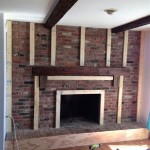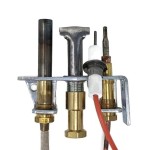```html
Gas Fireplace Crystals: A Comprehensive Guide
Gas fireplaces offer a convenient and aesthetically pleasing alternative to traditional wood-burning fireplaces. One increasingly popular way to enhance the visual appeal of a gas fireplace is through the use of decorative crystals. These crystals, typically made of tempered glass, provide a modern, shimmering effect, transforming the ambiance of a room.
This article provides a comprehensive overview of gas fireplace crystals, covering their benefits, types, installation, safety considerations, and maintenance. Understanding these aspects allows homeowners to make informed decisions about incorporating crystals into their gas fireplace setup.
Benefits of Using Gas Fireplace Crystals
Gas fireplace crystals offer several advantages over traditional gas fireplace logs or lava rocks. These benefits contribute to the growing popularity of crystals as a decorative element.
Aesthetic Appeal: Crystals offer a contemporary and elegant look. Their reflective surfaces create a dazzling display of light, enhancing the visual interest of the flames. The sleek, modern aesthetic aligns with contemporary interior design trends.
Versatility: Crystals are available in a wide range of colors, shapes, and sizes. This allows for customization to match the specific decor of a room. From clear and iridescent crystals to colored options like blue, red, or black, homeowners can choose crystals that complement their existing color schemes.
Heat Distribution: While not their primary function, crystals can contribute to more even heat distribution within the fireplace. Their arrangement allows for better airflow around the burner, which can improve the overall efficiency of the fireplace in radiating heat into the room.
Low Maintenance: Compared to traditional wood-burning fireplaces, gas fireplaces with crystals require minimal maintenance. The crystals themselves do not burn or degrade, reducing the need for frequent cleaning or replacement. Regular dusting is usually sufficient to maintain their appearance.
Cleanliness: Crystals are a clean alternative to wood or lava rocks. They do not produce ash or soot, contributing to a cleaner indoor environment. This also reduces the need for extensive cleaning of the fireplace and surrounding areas.
Types of Gas Fireplace Crystals
The market offers diverse types of gas fireplace crystals, each with unique characteristics affecting their appearance and performance. Understanding these variations is crucial for selecting the appropriate crystals for a specific fireplace.
Tempered Glass: This is the most common type of gas fireplace crystal. Tempered glass is heat-resistant and designed to withstand the high temperatures generated by a gas fireplace. This type of glass shatters into small, blunt pieces when broken, reducing the risk of serious injury.
Reflective Glass: Reflective glass crystals have a mirrored coating that enhances their reflective properties. This creates a more dramatic and dazzling display of light, amplifying the visual impact of the flames. The reflective coating is typically applied to one side of the crystal.
Iridescent Glass: Iridescent crystals feature a multi-colored coating that changes color depending on the angle of light. This creates a dynamic and visually stimulating effect, adding depth and complexity to the fireplace display. The iridescent coating is applied during the manufacturing process.
Colored Glass: Colored crystals are available in a wide range of hues, allowing for personalization of the fireplace's aesthetic. The color is typically infused into the glass during manufacturing, ensuring that it remains vibrant even under high heat.
Various Shapes and Sizes: Crystals come in various shapes, including cubes, diamonds, and crushed glass. The size of the crystals also varies, ranging from small pebbles to larger chunks. The choice of shape and size depends on the desired aesthetic and the size of the fireplace.
Installation and Safety Considerations
Proper installation and adherence to safety guidelines are paramount when using gas fireplace crystals. Incorrect installation can lead to safety hazards and reduced fireplace efficiency.
Consult the Fireplace Manual: Before installing any crystals, it is imperative to consult the fireplace manufacturer's manual. The manual provides specific instructions and guidelines for using decorative materials within the fireplace. It also specifies the allowable amount and type of material that can be safely used.
Ensure Proper Ventilation: Gas fireplaces require proper ventilation to function safely. Obstruction of vents with crystals can lead to carbon monoxide buildup, posing a serious health risk. Ensure that all vents and openings in the fireplace are clear and unobstructed.
Use Only Approved Materials: Only use crystals specifically designed for gas fireplaces. Other materials, such as regular glass or plastic, can melt or release harmful fumes when exposed to high temperatures. Verify that the crystals are made of tempered glass and are heat-resistant.
Distribution of Crystals: Distribute the crystals evenly across the firebox, avoiding overfilling. Overfilling can restrict airflow and reduce the efficiency of the fireplace. Follow the manufacturer's recommendations for the appropriate amount of crystals to use.
Professional Installation: If unsure about the installation process, it is advisable to seek professional assistance. A qualified technician can ensure that the crystals are installed correctly and that the fireplace functions safely and efficiently.
Maintenance and Cleaning
While gas fireplace crystals require minimal maintenance, occasional cleaning is necessary to maintain their aesthetic appeal. Regular cleaning prevents the buildup of dust and soot, ensuring that the crystals continue to sparkle and reflect light effectively.
Cool Down: Before cleaning the crystals, ensure that the fireplace is completely cool. Attempting to clean hot crystals can result in burns or damage to the crystals.
Remove the Crystals: Carefully remove the crystals from the firebox. This can be done by hand or with a small scoop. Place the crystals in a container or on a protected surface.
Cleaning Solutions: Clean the crystals with a mild soap and water solution. Avoid harsh chemicals or abrasive cleaners, as these can damage the surface of the crystals. Gently scrub the crystals with a soft cloth or sponge to remove any dust or soot.
Rinsing and Drying: Rinse the crystals thoroughly with clean water to remove any soap residue. Dry the crystals completely before placing them back into the firebox. Moisture can cause streaking or spotting on the crystals.
Re-Installation: Once the crystals are clean and dry, carefully re-install them in the firebox. Distribute the crystals evenly, following the manufacturer's recommendations for placement and quantity.
Regular Dusting: Regularly dust the crystals with a soft cloth to prevent the buildup of dust. This will help maintain their sparkle and reflective properties.
By understanding the benefits, types, installation, safety considerations, and maintenance requirements of gas fireplace crystals, homeowners can make informed decisions about incorporating them into their gas fireplace setup. The result is an aesthetically pleasing and functional fireplace that enhances the ambiance of any living space
```
Crystal Or Stone In Gas Fireplace Design Build Planners

Fire Pit Glass Rocks For Outdoor Propane Gas Fireplace Crystals Patio New 10 Lbs

Natural Gas Fireplace Stones Vent Free European Home Contemporary Open Hearth Standing

Fire Glass Crystals The 2024 Buyers Guide

Fireplace Glass For Fire Pits And Fireplaces

We Will Be Updating Our Fireplace To Use Glass Rocks Rather Than Logs Outdoor Gas Firepit That Fire

Crystal Or Stone In Gas Fireplace Design Build Planners

Media Options Linear Fireplaces Flare

Fire Pit Glass Rocks For Outdoor Propane Gas Fireplace Crystals Patio New 10 Lbs

Media Options Linear Fireplaces Flare








